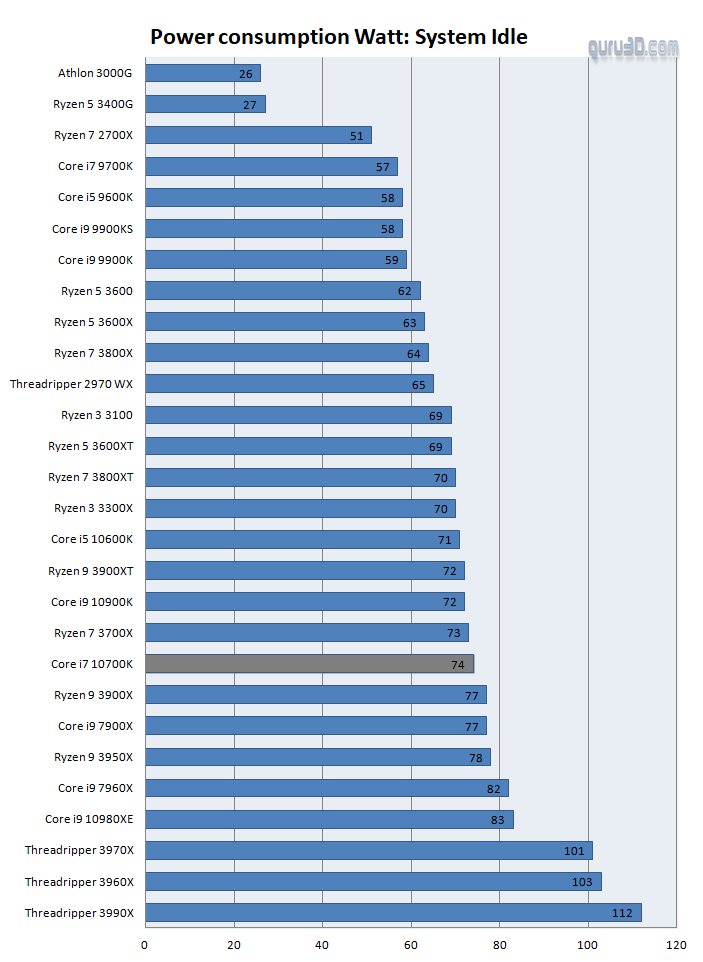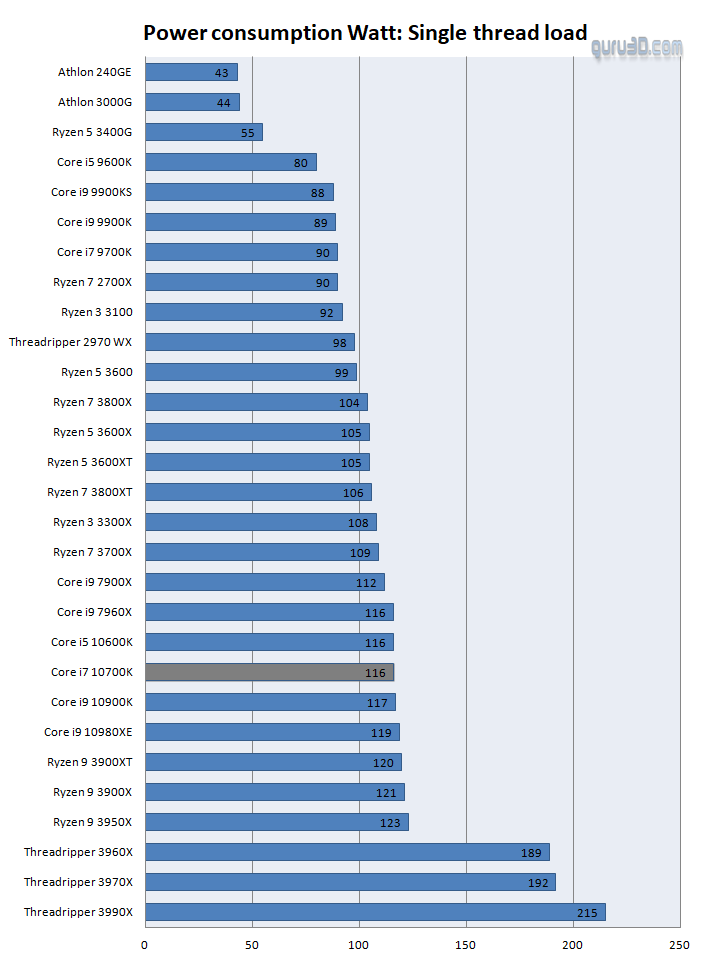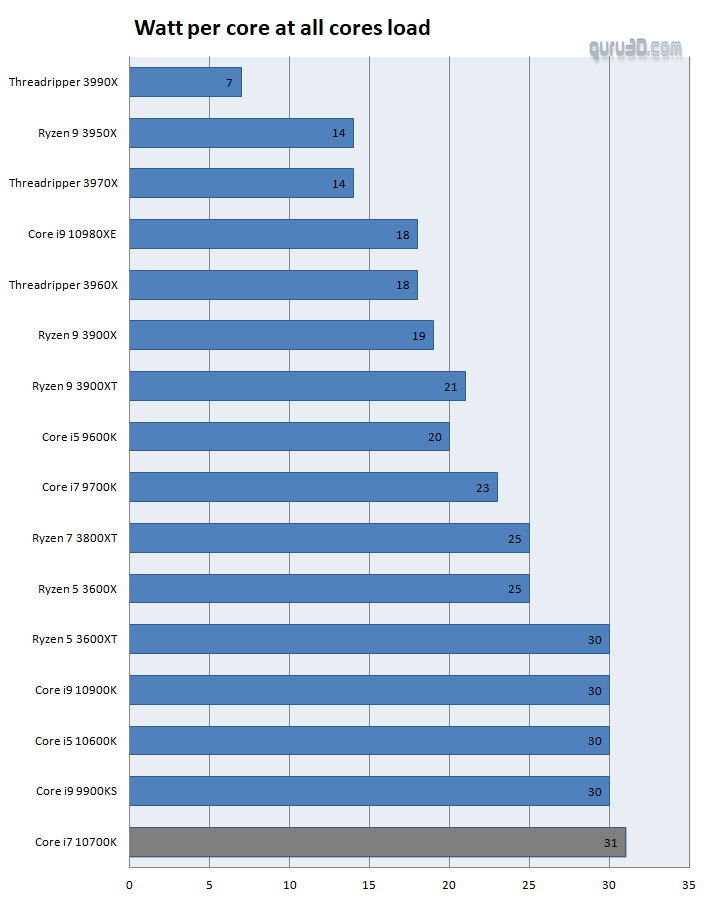Power Consumption and CPU LOAD temperatures
Power Consumption
We show energy consumption based on the entire PC (motherboard / processor / graphics card / memory / SSD). This number depends and will vary per motherboard (added ICs / controllers / wifi / Bluetooth) and PSU (efficiency). Keep in mind that we measure the ENTIRE PC, not just the processor's power consumption. Your average PC can differ from our numbers if you add optical drives, HDDs, soundcards etc.
Power consumption measurements will differ per PC and setup. Your attached components use power but your motherboard can also have additional ICs installed like an audio controller, 3rd party chips, network controllers, extra SATA controllers, extra USB controllers, and so on. These parts all consume power, so these results are a subjective indication. Next, to that, we stress all CPU cores 100% and thus show peak power consumption.
Above can see that once we average out the cores over system power draw per core, we're looking at total system power + CPU cores stressed / the number of cores.
Temperatures
The reason we do not table up temperature results is that we'd need to apply the same cooling over and over on all platforms. Also, coolers (RPM) react differently to TDP and variables like BIOS on all motherboards let alone brands. The Core i7 10700K peaks towards 70 Degrees C under full load on the processor package, this temperature is measured during a looped wPRIME 1024M runs. Overall not bad at all. We are using an LCS cooling by Corsair. BTW notice the Power state PL2 and PL2 behavior as the plot shows it perfectly, the processor goes full throttle for a while and then drops down in frequency a bit lowering temperatures.
The fastest core
In light of the recent Turbo clock frequency discussion, we want to show you the fastest core frequency on a single thread. The processor reaches its advertised 5100 MHz on two cores, that's the Thermal Velocity Boost). You can see an all-core clock of 47x. And with any threads in between you can reach 5.0 GHz.






